(The following article originally appeared on the Sitka Bicycle Friendly Community Coalition website, Celebrate Sitka Cycling, on May 14, 2012.)
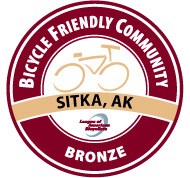 In 2008, Sitka became the first Alaska community to earn a Bicycle Friendly Community award. On Monday, May 14, Sitka became the first Alaska community to earn a renewal of its Bicycle Friendly Community designation.
In 2008, Sitka became the first Alaska community to earn a Bicycle Friendly Community award. On Monday, May 14, Sitka became the first Alaska community to earn a renewal of its Bicycle Friendly Community designation.
With Monday’s national announcement to kick off National Bike to Work Week, Sitka maintained its bronze level designation in the Bicycle Friendly Community program run by the League of American Bicyclists. Sitka now is one of three recognized communities in Alaska (Anchorage earned a BFC designation in 2009 and Juneau in 2011, also at the bronze level). There currently are 214 communities in 47 states with Bicycle Friendly Community designations (at the platinum, gold, silver and bronze levels). Sitka’s award is good for four years, expiring in February 2016.
“Sitka is pleased to once again receive recognition as a Bicycle Friendly Community and the first city in Alaska to be a repeat recipient,” Sitka Mayor Cheryl Westover said. “Thanks to the many Sitkans who actively support bicycling.”
 “This is great news and a great time to thank everyone involved in helping us reach this Sitka Health Summit goal,” said Doug Osborne, who coordinates the Sitka Bicycle Friendly Community Coalition. “Just the other day, I heard a visitor say how neat it was to see all the people in Sitka who are getting around on bikes. I have to agree, because there so many benefits that come from biking and being a bicycle-friendly town. I’m grateful to everyone who helped us get this designation and the positive national attention that comes with it.”
“This is great news and a great time to thank everyone involved in helping us reach this Sitka Health Summit goal,” said Doug Osborne, who coordinates the Sitka Bicycle Friendly Community Coalition. “Just the other day, I heard a visitor say how neat it was to see all the people in Sitka who are getting around on bikes. I have to agree, because there so many benefits that come from biking and being a bicycle-friendly town. I’m grateful to everyone who helped us get this designation and the positive national attention that comes with it.”
Sitka first applied for the Bicycle Friendly Community program as one of the community health priority projects chosen during the 2007 Sitka Health Summit, and it was the first project completed. The 2011 Sitka Health Summit supported renewing Sitka’s status as a Bicycle Friendly Community. The 2012 Sitka Health Summit takes place on Oct. 3-6 at a variety of locations around Sitka. Over the past five years, the Sitka Health Summit resulted in high-profile projects such as starting the Sitka Farmers Market, expanding community gardens in Sitka, supporting the Hames Athletic and Wellness Center, bringing local businesses and insurance companies together to promote employee wellness programs, the Choose Respect mural about domestic violence prevention, planting fruit trees in Sitka and the award-winning Fish to Schools project.
“First and foremost, thanks to the bicycle commuters who are now riding to work at almost 10 times the national average,” Osborne said. “Secondly, thanks to the courteous motorists who are sharing the road. And lastly, thanks to all the groups, workplaces, schools, shops and individuals who have made various contributions over the years.”
In the application feedback form provided by the League of American Bicyclists, Sitka received high marks for its number of regular bike commuters (4.9 percent, nearly 10 times the national average and five times the state average), Sitka’s promotion of National Bike Month events in May, the Share-the-Road and Be Safe Be Seen education campaigns, cycling workshops, the low number of motor vehicle/bicyclist crashes (only eight in five years reported to Sitka Police), and for several unique cycling events. The Sitka campus of the SouthEast Alaska Regional Health Consortium (SEARHC), Sitka’s largest employer, earned a bronze level Bicycle Friendly Business designation in September 2011.
 “One of the things that impressed our reviewers about Sitka is the one-of-a-kind local biking events, like the Winter Cycling Celebration,” said Bill Nesper, Vice President of Programs for the League of American Bicyclists. “Events like this really help people see that biking is a great way to get around for transportation and recreation all year round.”
“One of the things that impressed our reviewers about Sitka is the one-of-a-kind local biking events, like the Winter Cycling Celebration,” said Bill Nesper, Vice President of Programs for the League of American Bicyclists. “Events like this really help people see that biking is a great way to get around for transportation and recreation all year round.”
In order to earn a Bicycle Friendly Community designation, communities have to complete an application that covers five main focus areas called The Five E’s — Engineering, Education, Encouragement, Enforcement and Evaluation/Planning. There are more than 100 questions in the application, asking everything from how many miles of bike lanes to how many schools participate in the Safe Routes To School program. Communities also are asked about their biking or non-motorized transportation plans and how they are meeting their goals.
Monday’s announcement saw 49 communities earn new, improve or maintain current Bicycle Friendly Community designations. The Bicycle Friendly Community program is part of the larger Bicycle Friendly America program that includes Bicycle Friendly State, Bicycle Friendly Business and Bicycle Friendly University designations. In addition to the League of American Bicyclists, the Bicycle Friendly America program is supported by Bikes Belong and Trek Bicycle’s One World Two Wheels Campaign.
“We aren’t surprised that this was the largest number of new and renewing applicants that we’ve ever had,” League of American Bicyclists President Andy Clarke said. “The popularity of this program is clear evidence that simple steps to make bicycling safe and comfortable pay huge dividends in civic, community and economic development.”
• Feedback for Sitka’s 2012 Bicycle Friendly Community application
 For the fifth straight year, Washington ranks No. 1 in the Bicycle Friendly State rankings compiled by the League of American Bicyclists. Alaska dropped from No. 29 to No. 33 in this year’s rankings, which were released on May 22 as part of National Bike Month.
For the fifth straight year, Washington ranks No. 1 in the Bicycle Friendly State rankings compiled by the League of American Bicyclists. Alaska dropped from No. 29 to No. 33 in this year’s rankings, which were released on May 22 as part of National Bike Month.
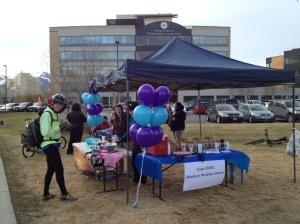



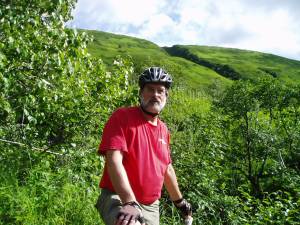




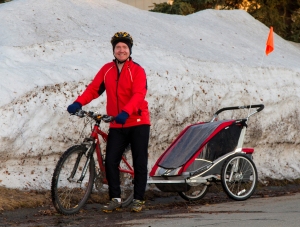
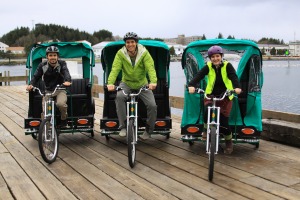
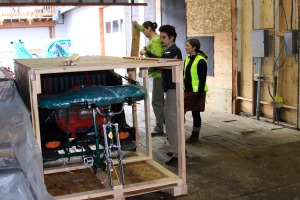



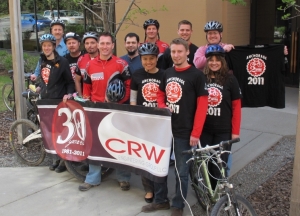
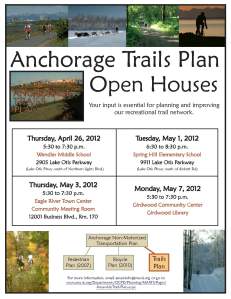

You must be logged in to post a comment.